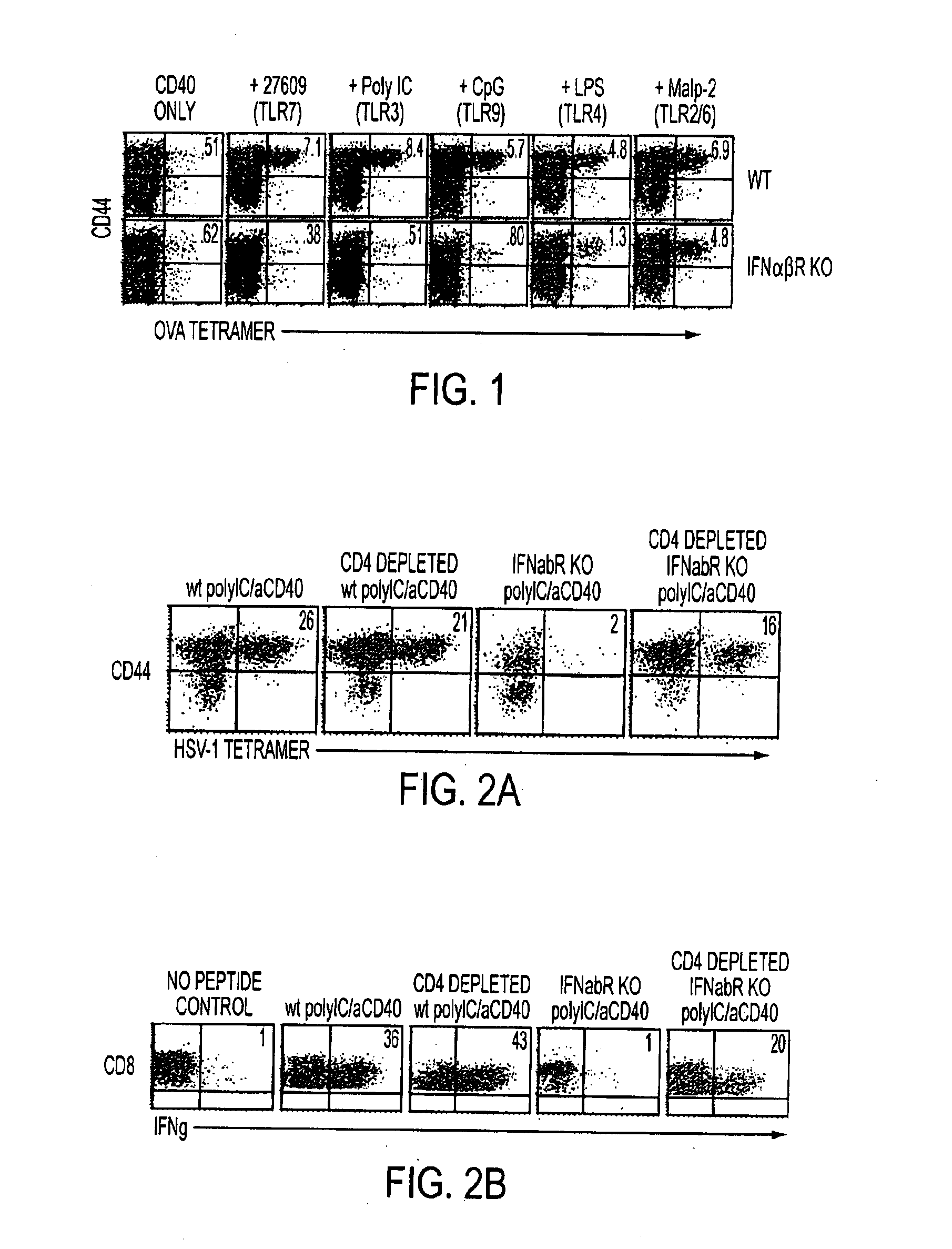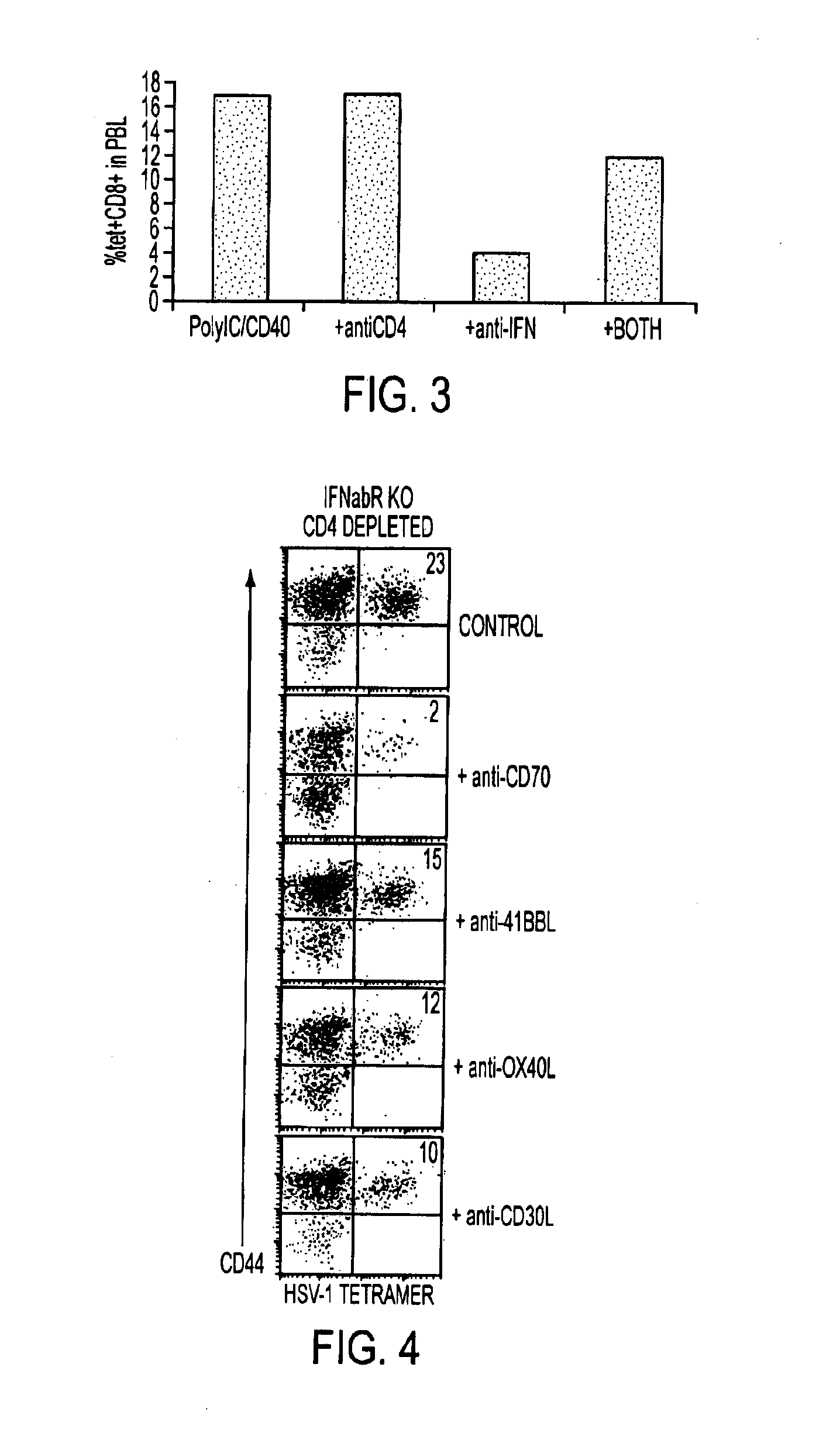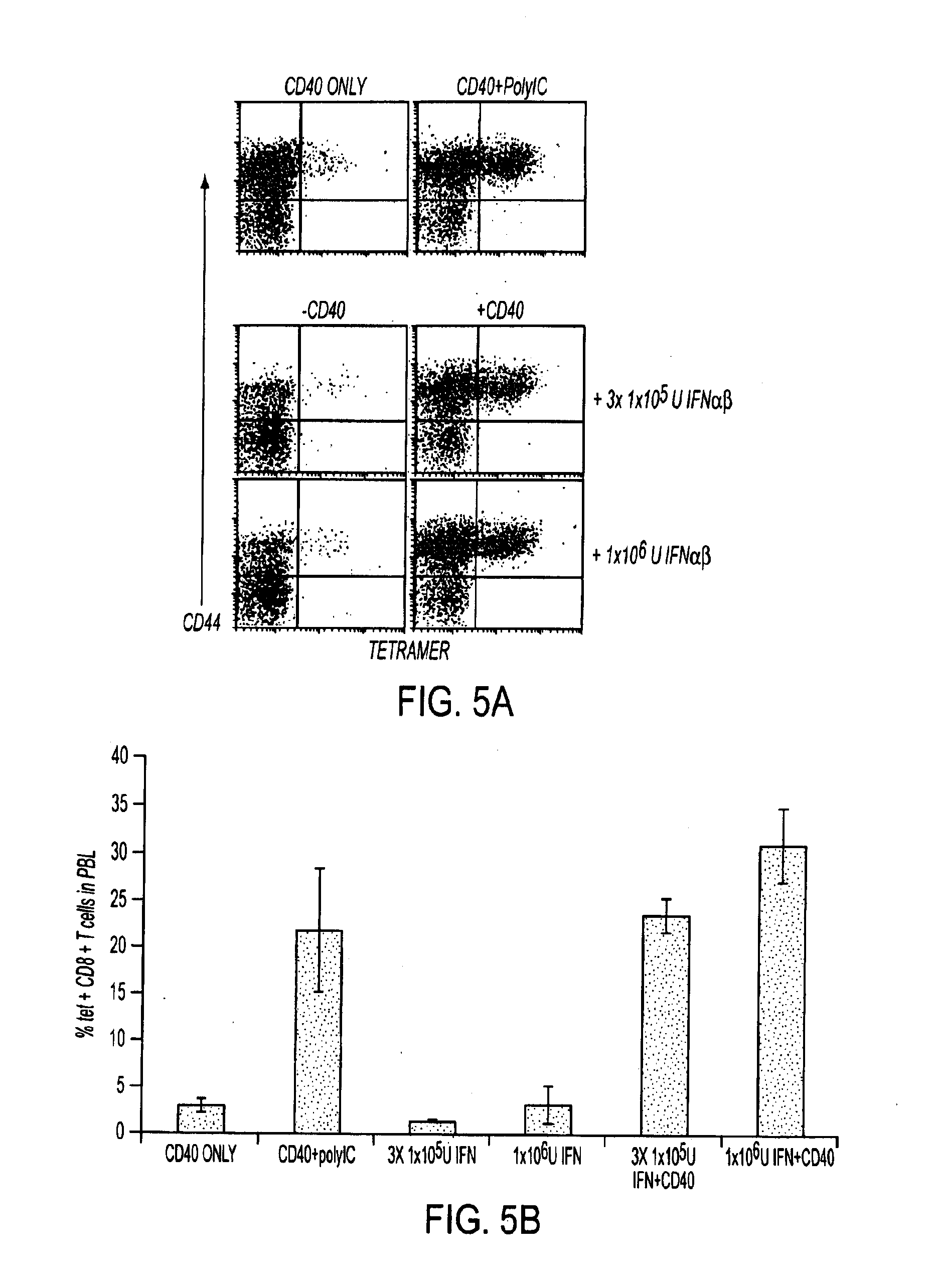Cd40 agonist antibody/type 1 interferon synergistic adjuvant combination, conjugates containing and use thereof as a therapeutic to enhance cellular immunity
a technology of cd40 agonist and conjugate, which is applied in the field of synergistic adjuvant combinations, can solve the problems of poor immune response, inability to mount a sufficient response, and inability to induce inappropriate th2 responses, and achieve enhanced th1 immunity, enhanced th1 immunity, and potent expansion of cd8+ t cells.
- Summary
- Abstract
- Description
- Claims
- Application Information
AI Technical Summary
Benefits of technology
Problems solved by technology
Method used
Image
Examples
example 1
CD8+ T Cell Expansion Following Combined TLR / CD40-Agonist Immunization Demonstrates Variable Dependence Upon IFNαβ
[0127]While all TLR agonists synergized with anti-CD40 to promote CD8+ T cell expansion, the inventors observed that the CD8+ T cell responses elicited from certain TLR agonists / anti-CD40 combinations was completely dependent on IFNαβ. Based thereon the inventors immunized interferon αβ receptor knockout (IFNαβR KO) mice with peptide antigen in the context of different combined TLR / CD40-agonists in the experiments contained in FIGS. 1 and 2 as described above.
[0128]In the experiment contained in FIG. 1 CD8+ T cell expansion was measured following combined TLR / CD40 agonist administration in agonmice (bottom row) which were immunized with ovalbumin peptide, anti-CD40, and the indicated TLR agonists. Seven days later the ovalbumin-specific T cell responses were measured in the spleen by tetramer staining and FACS analysis. Numbers in the upper right quadrant indicate the pe...
example 2
CD8+ T Cell Expansion Following Combined TLR / CD40-Agonist Immunization is Recovered in CD4-Depleted IFNαβR KO Hosts
[0131]The deficient CD8+ T cell response in IFNαβR KO mice seemed to suggest to the inventors an obligate role for IFNαβ in the response elicited by certain TLR / CD40-agonist combinations described above. As shown in the experiment in FIG. 2, Wt and IFNαβR KO mice were depleted of CD4+ T cells by injection of the anti-CD4 antibody GK1.5 one day before peptide immunization in conjunction with combined TLR / CD40-agonists (FIG. 2). Seven days after combined TLR / CD40-agonist immunization, mice were sacrificed and PBL and spleen cells were isolated and analyzed by tetramer and intracellular IFNγ staining. Immunization with peptide and polyIC / anti-CD40 failed to generate a CD8+ T cell response in IFNαβR KO mice. However, CD4 depletion restored the CD8+ T cell response in IFNαβR KO mice with respect to both numbers (percent of total CD8+ T cells, FIG. 2A) and function (FIG. 2B) ...
example 3
Role of TNF Ligands for the CD8+ Response in IFNαβR KOs
[0136]As shown in the experiment contained in FIG. 4, the CD8+ T cell response in WT mice generated by combined TLR / CD40-agonist immunization is dependent on CD70 (See FIG. 4). In this experiment the CD8+ T cell response was assayed in CD4-depleted IFNalphabetaR KO hosts following combined TLR / CD40 immunization and was shown from the results to be largely dependent on CD70. IFNalphabetaR KO mice were depleted of CD4 cells and immunized with HSV-1 peptide, polyIC, and anti-CD40 antibody as described above. Mice were then injected with anti-TNF ligand antibodies as in FIG. 1. At day seven PBLs were again analyzed by tetramer staining.
[0137]As shown in the foregoing experiments, the CD8+ T cell response in IFNαβR KO mice is unique in that it can only be elicited by TLR / CD40-agonist combinations that do not stimulate IFNαβ, or by CD4-depleting the IFNαβRKO host prior to TLR / CD40-agonist immunization. The results in FIG. 4 further in...
PUM
| Property | Measurement | Unit |
|---|---|---|
| mean fluorescence intensity | aaaaa | aaaaa |
| survival time | aaaaa | aaaaa |
| structure | aaaaa | aaaaa |
Abstract
Description
Claims
Application Information
 Login to View More
Login to View More - R&D
- Intellectual Property
- Life Sciences
- Materials
- Tech Scout
- Unparalleled Data Quality
- Higher Quality Content
- 60% Fewer Hallucinations
Browse by: Latest US Patents, China's latest patents, Technical Efficacy Thesaurus, Application Domain, Technology Topic, Popular Technical Reports.
© 2025 PatSnap. All rights reserved.Legal|Privacy policy|Modern Slavery Act Transparency Statement|Sitemap|About US| Contact US: help@patsnap.com



